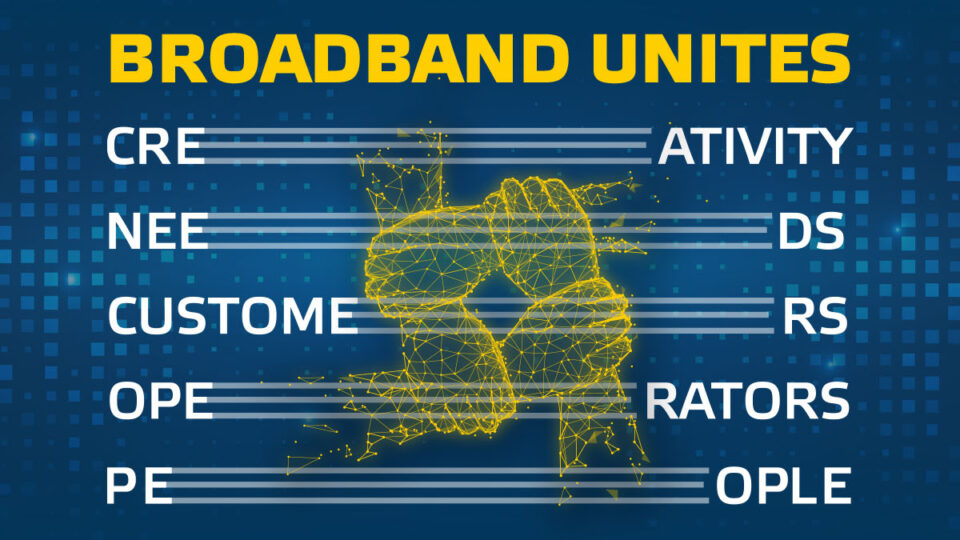
Top broadband upgrade ingredient: the customer-centric focus
Like many of my peers in the broadband industry, I am a keen observer of the ongoing network upgrades. Amidst the continuous discourse surrounding upgrade strategies, fibre overbuild initiatives by major players, and deliberations on the most suitable technologies, I can’t help but feel that the customer’s perspective is often overlooked. By “customer,” I don’t just refer to those within the network operator realm, but rather the ultimate end-user – the individual who subscribes and pays for the broadband service.
What are these customers seeking? Do they need technical features such as symmetrical upload and download bandwidth? Are they seeking for low latency? Do they really need an optical connection into your home? Or do they just want good, affordable internet? Understanding of the customer’s desires should steer the course of broadband upgrades, ensuring that technological advancements and strategic decisions align with the ultimate goal of providing a satisfying broadband experience for the end-user.
In the realm of broadband upgrades, it is often the case that end-users aren’t truly concerned about where “the box” in their premises sources its signal from nor any other technical details behind the scenes. Customers prioritise the end result – and their focus is on the everyday aspect of their internet service. Much like when ordering a pizza, you may not care so much about the oven used to bake it, or the specific vehicle used for delivery – you just want your pizza on time and delicious. What matters to the broadband customers is a consistently reliable, affordably priced, and seamless internet experience.
In my opinion, the broadband upgrade path should be as unbiased as the end-customer is towards the choice of infrastructure. Gigabit is, at the end of the day, a gigabit, whether delivered via fibre optic or the classic HFC network. It seems that the classic HFC has somewhat lost its position in the discussion against fibre-to-the-home networks in recent years, although utilising its existing infrastructure and expanding it to be interoperable still gives operators what is needed to deliver the good, affordable internet to the end-customers today.
A considerable competitive advantage for the classic HFC networks arises from being able to carry out the upgrades without capital-heavy infrastructure investments. With the development of Distributed Access Architecture (DAA), the industry has created a new, interoperable technology that secures future investments and turns the existing cable infrastructure into a gigabit-capable network. The benefits are significant especially in the multi-dwelling unit (MDU) environments in which avoiding the rebuild of the house network results in time and cost-savings for the operator and the residents alike.
From the financial perspective, it is also crucial to understand that the return on broadband infrastructure investments is not solely dependent on the “homes-passed” figures or in the number of “homes-connected”. Instead, the key to meeting revenue expectations especially in short or mid-term lies in the “homes-contracted” – signifying paying customers. This is a decisive factor that shifts the emphasis from the broad network reach to the critical metric of acquiring contracted, revenue-generating subscribers. Providing a rapid and easily deployable home connection, DAA is a clear asset in transforming the homes passed to homes contracted.
As we navigate the dynamic landscape of broadband upgrades, it is evident to me that the customer’s perspective is the compass guiding our decisions. The choice of technology should not overshadow the fundamental goals of delivering good and affordable internet service. Ultimately, the industry’s success depends on the careful consideration of cost and time of the upgrade projects, as well as the ability to exceed customer expectations – keeping these three in balance guarantees that we can continue align with opportunities and challenges that lie ahead.
Sven Baus
Sven Baus
I am the Sales Manager for DACH region. I joined Teleste in the beginning of 2021. I have long experience from the industry. After my RF engineering studies, I joined the Product Management Team at a German manufacturer for RF and multimedia technology. I am also experienced in Technical Sales, Customer Services and I have worked with operators and the distributors abroad. Please see My LinkedIn.



